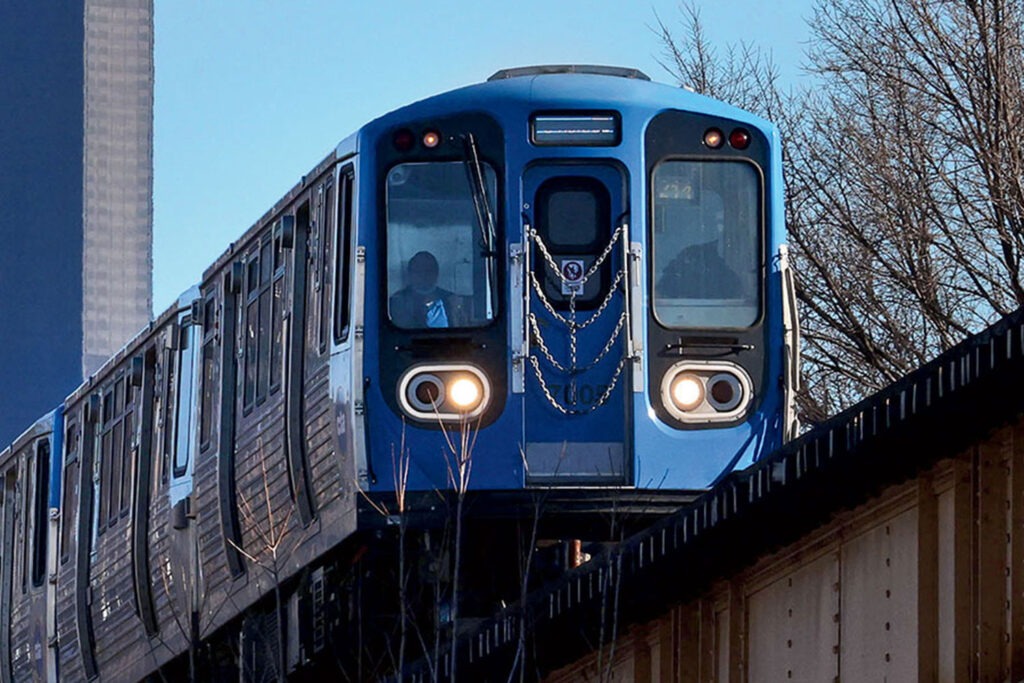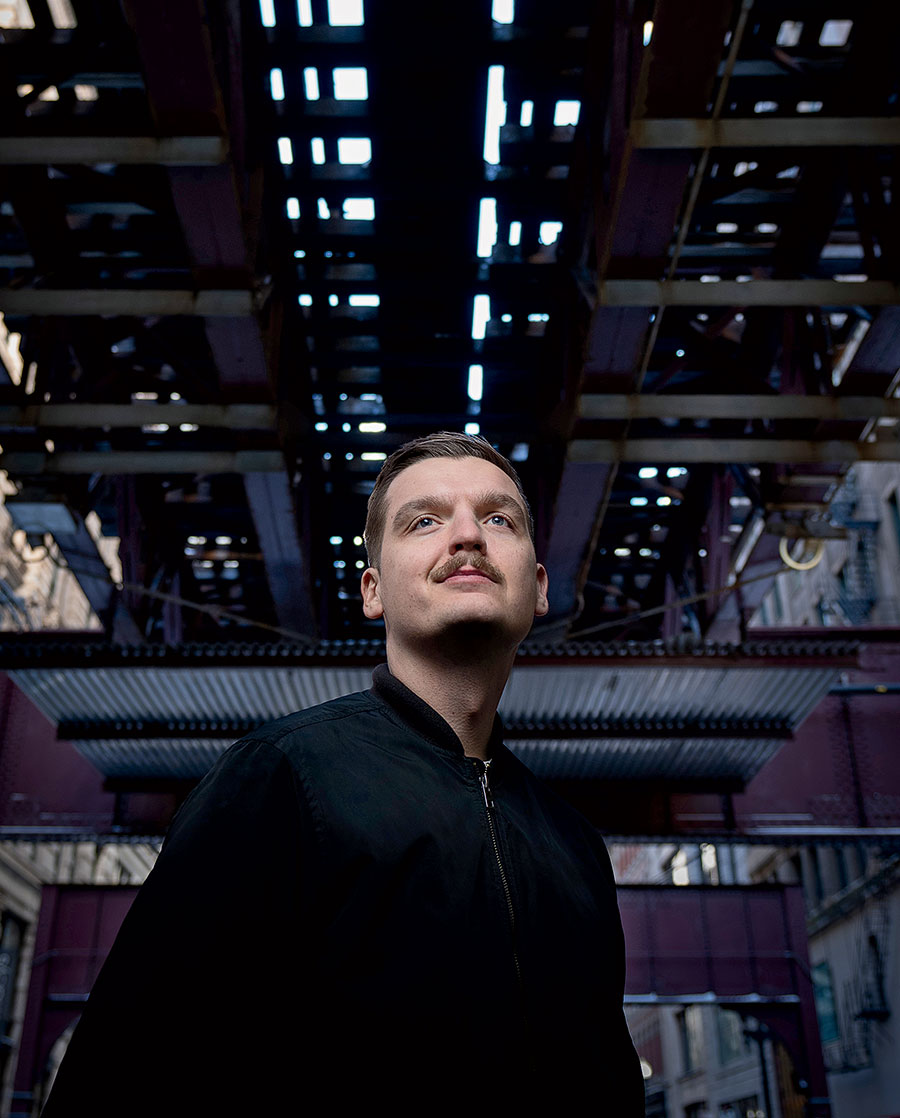In Batman Begins, the 2005 film in which Chicago stood in for Gotham City, a young Bruce Wayne rides a train resembling the L into the city with his billionaire parents. The car is sleek, clean, and modern. “Gotham’s been good to our family, but the city’s been suffering,” Thomas Wayne says to his son. “People less fortunate than us have been enduring very hard times. So we built a new, cheap public transportation system to unite the city.”
Fans of the film know what happens next. The city falls into disrepair, and the public transit system becomes a decrepit and scary mess, one resembling Chicago’s real-life CTA lines — and that’s if the trains show up at all.
During this winter’s subzero weather, commuters reported wait times of up to 30 minutes between trains. This can’t be blamed on the temperature. Commuters Take Action, a grassroots transit advocacy group, has been tracking discrepancies between scheduled and real-time trains and buses since 2021, finding that train service has been cut by 24 percent. Fabio Göttlicher, the group’s cofounder, is calling for CTA president Dorval Carter Jr. to be fired, for Mayor Brandon Johnson to get directly involved, and for city residents to treat public transportation as a utility — before it’s too late.
Was there a particular incident or situation that led to the creation of Commuters Take Action?
Not one single incident, but really just the deterioration of the quality of CTA service starting on the downslope of the COVID pandemic. I’m a software engineer. As I was taking the train throughout 2021, I started noticing trains weren’t coming as often as they used to. Sometimes I’d wait 20 to 25 minutes. So I’d think, How can I use my engineering skills to come up with a way to quantify this? Whenever you use the Ventra app or Google Maps to see when your next trip is coming, it’s potentially from a dataset that’s being continuously published by the CTA. I wrote a program that runs 24 hours a day that keeps tracking the live trains as they come into stations. What I found, when I first started in December 2021, was that the CTA was running only about 55 to 60 percent of the trains their schedule said they should be running. I started publishing the data in local Facebook groups for transit enthusiasts, on Reddit and other social media. That’s how Commuters Take Action started.
There’s a petition on your website calling for the firing of the CTA’s president. How’s that going?
The CTA has not been truthful by not informing passengers as much as they could about the changes to their everyday service. In the beginning, we were really hoping that we could have a dialogue with the CTA and work with them. We gave them a chance to fix things. But years later, there hasn’t been much more honesty by the agency. We don’t think CTA president Dorval Carter presents himself with much integrity or truthfulness. That’s not the kind of leader the CTA needs. A lot of the pressure to get a new president in place has to come from the mayor. Lori Lightfoot and Brandon Johnson — neither of them have really shown much interest in transit. We’re just here to keep making noise about it and hope that someone will notice and look into the lack of any progress or competency by Dorval Carter.
Does public transit have an impact on the city’s economic growth?
Transportation is the backbone of the city. People need to be able to get to their jobs. If you drive in Chicago, you know how frustrating that can be. You get on the Kennedy in the morning and the traffic jams are never-ending. But a lot of people don’t take the Blue Line as an alternative because it has failed them too many times. We have spoken to groups that represent some of the biggest companies in Chicago, which are somewhat unexpected allies to us. They’re always saying, “If you want Chicago to be an attractive place to run a business, employees need to know that if they move here they have a transit system they can rely on.” At O’Hare or Midway, [a tourist’s] first impression is a train that should be leaving every six minutes. But if they end up waiting 25 minutes, are they really going to recommend Chicago to their friends to come visit?
Which service is worse, the trains or the buses?
On the buses, the percentage of service reduction is not as bad. And it has to do with the CTA training process. Train operator training is a lot more complicated than for a bus operator.
“We don’t think CTA president Dorval Carter presents himself with much integrity or truthfulness. That’s not the kind of leader the CTA needs.”
How so?
Historically, becoming a CTA rail operator has been a very prestigious job. It pays fairly well. But if you want to become a train operator, you have to start at a lower-paying job, which is usually as a flagger. A flagger is someone who works on the CTA rail tracks in maintenance or construction to ensure safe train passage. The current contract stipulates that you have to be a flagger for at least a year before you can even start training to be a rail operator. The flagger position doesn’t pay nearly as well. So the promise of possibly making a decent amount of money in a year or more is not too good of a prospect to potential job candidates.
Your group says it is “antiboard.” What does that mean?
The CTA board is composed of seven members, who oversee operations. They have the power to name the president. I’ve gone to or listened to every single CTA board meeting the past two years. Unfortunately, I think the board members have failed to fulfill their duties of ensuring that Chicago’s transit is in the right hands. They always praise President Carter. They think he’s doing a good job, despite the metrics not being there. Most of the board members have no transit background whatsoever. They don’t seem knowledgeable enough to be making decisions about the transit agency. It’s up to Mayor Johnson to make two appointments for the city board. But so far, he has not done so. Those are two spots that could be filled with qualified people, but the mayor’s office has, for whatever reason, not fulfilled its duty.
How can commuters mobilize for change?
Chicagoans have come to accept that the CTA has not served them well. We deserve better. The best course of action is to start talking to aldermen. A lot of these decisions rest with the mayor’s office. Chicago’s transit is in trouble.

Too Little, Too Late
How did the L perform in 2023? Not well, according to CTA data tracked by Commuters Take Action. Only half the trains scheduled arrived on time.
■ Scheduled trips in 2019 (prepandemic): 802,331
■ Scheduled trips in 2023: 530,924
■ Actual trips in 2023:¹ 454,051
■ Trains arriving on time in 2023:² 267,433
1. Trains that completed at least half their route.
2. Trains arriving within a 25 percent window on either side of their scheduled intervals.



